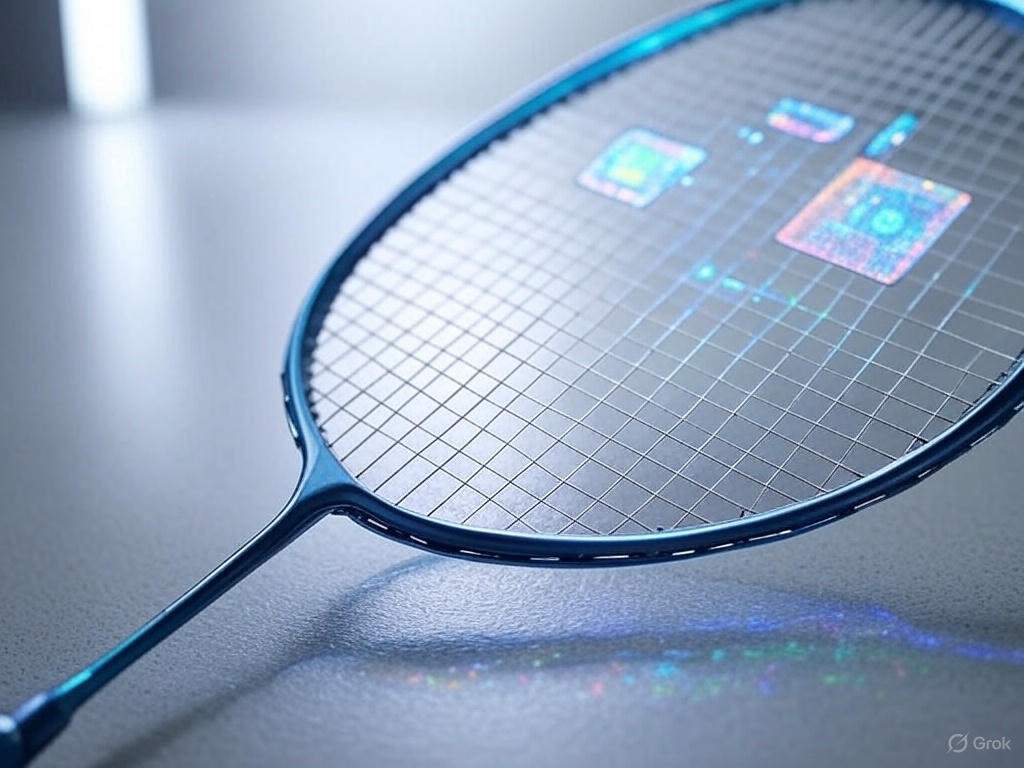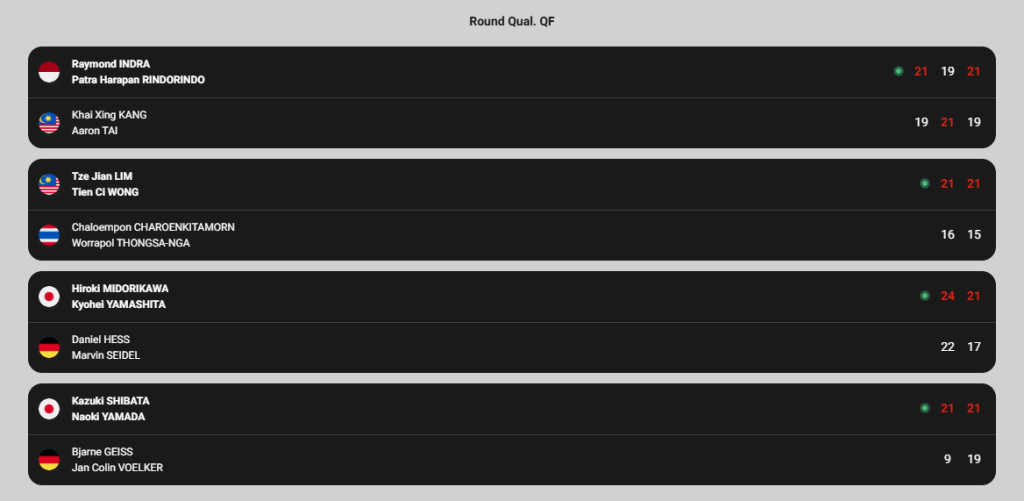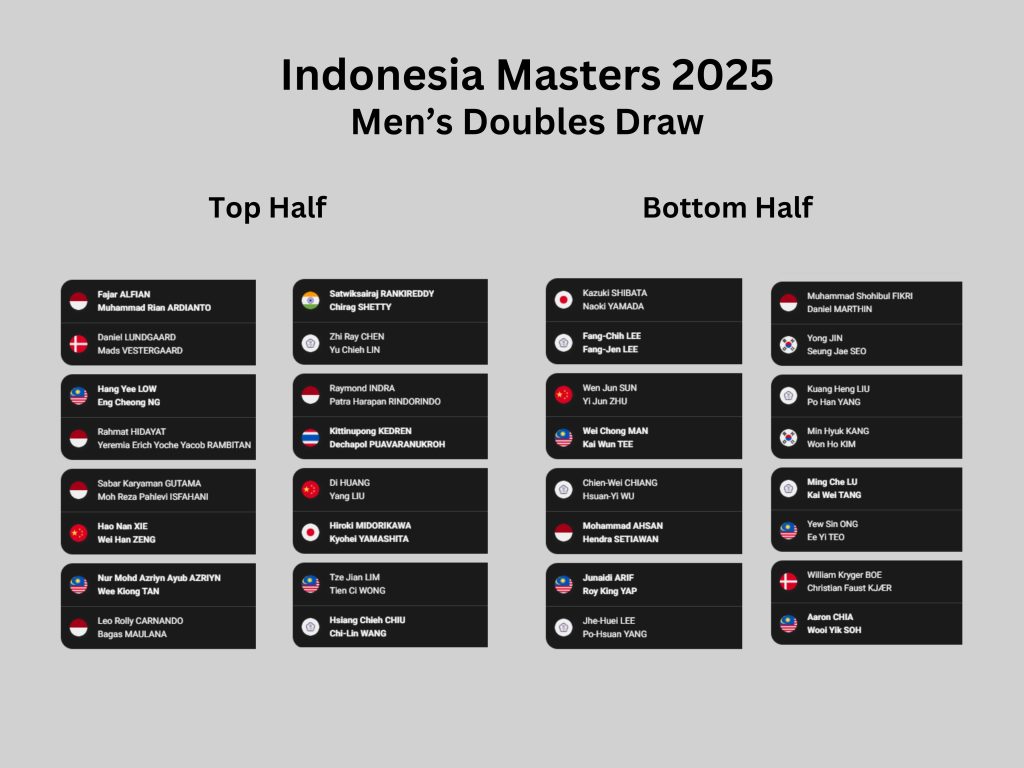The future belongs to those who believe in the beauty of their dreams. The best way to predict the future is to invent it. The vision you are about to read is radical. Some might say it is utterly unrealistic and a fantasy.
This might be true because we think of future scenarios based on what we know today. That is the critical limiting factor.
But what if we dared to hope for a more dynamic, professional, and less politicized governing body in the future? What are the prospects then? Perhaps Walt Disney’s famous quote, “If you can dream it, do it” should be the prevailing belief in the world of badminton.
Want to read more about innovation and the future of badminton – get the newsletter
The future of badminton is driven by tech advancements
Badminton, already the fastest racket sport in the world, is poised for a transformative evolution over the next 25 years.
By 2050, advancements in technology, global accessibility, and player development will redefine the game, blending tradition with innovation while expanding its reach to unprecedented levels.
This AI-delivered essay explores how badminton will evolve, focusing on technological integration, training methodologies, global expansion, and cultural impact, all while preserving the sport’s core essence.
Technological Integration: Revolutionizing Play and Spectatorship

The badminton racket of the future
By 2050, technology will have deeply embedded itself into badminton, enhancing both gameplay and fan engagement.
Smart rackets, embedded with sensors and AI, will become standard. These rackets will analyze swing speed, shuttle impact, and player biomechanics in real-time, providing instant feedback to athletes during matches.
Imagine a player like Viktor Axelsen’s successor adjusting their grip mid-rally based on AI suggestions projected onto augmented reality (AR) glasses, optimizing their smash to hit 600 km/h—a new world record.
Courts will also evolve, with holographic lines that adjust dynamically for different formats, eliminating disputes over line calls. The shuttlecock itself, traditionally made of feathers, will see a synthetic revolution—nano-engineered materials will ensure consistent flight patterns, even in varying atmospheric conditions, addressing long-standing issues like humidity affecting play.
Spectators will experience matches through immersive virtual reality (VR), “standing” courtside at the All England Open while physically located in New York. Their VR headsets will sync with 360-degree drone footage capturing every angle of a Kevin Sanjaya Sukamuljo-style no-look shot.
Broadcasting will leverage AI to provide personalized commentary, tailoring narratives to individual viewer preferences—whether they’re a casual fan in Brazil or a die-hard enthusiast in Indonesia.
Social media platforms, evolved into holographic feeds, will allow fans to interact with players in real-time, voting on rally replays or even influencing warm-up routines through gamified apps. This fusion of technology will elevate performance and make badminton a truly global spectacle, accessible to billions.
Training Methodologies: The Rise of Superhuman Athletes
Training in 2050 will harness cutting-edge science to produce badminton players who push the boundaries of human capability. Genetic profiling, already in use by 2025, will become routine, identifying young talents with optimal fast-twitch muscle fibers for explosive power—think Lin Dan’s successors, but faster and more durable.
Training academies, like the Sports Affairs Academy in Malaysia, will use AI-driven simulations to replicate historical greats, allowing players to “spar” against a virtual Lee Chong Wei, learning to counter his signature cross-court smash.
Wearable tech, such as exosuits, will assist in strength and conditioning, enabling players to train at intensities previously unimaginable without risking injury. For instance, a player could practice 1,000 smashes in a session, with the exosuit absorbing 40% of the impact stress on their shoulder.
Neurofeedback devices will enhance mental resilience, training players to maintain focus during high-pressure moments, like a 20-20 decider at the 2050 BWF World Championships. Virtual reality training will simulate diverse environments—high-altitude courts, windy conditions, or even zero-gravity arenas for experimental formats—preparing players for any scenario.
Nutrition will also advance, with personalized diets based on gut microbiome analysis ensuring peak performance. Players will consume nutrient-packed gels mid-match, instantly boosting energy without the crash, a far cry from the water breaks of 2025.
These advancements will produce athletes who are faster, stronger, and more strategic, potentially extending careers well into their 40s, as seen with a hypothetical 45-year-old Tai Tzu Ying still dominating women’s singles with her deceptive flicks.
Global Expansion: Badminton as a Truly Universal Sport
By 2050, badminton will transcend its traditional strongholds in Asia and Europe, becoming a truly universal sport.
The BWF, building on initiatives like the 2025 Shuttle Time program, will have established academies in 150 countries, from rural Kenya to urban Brazil, using AI coaches to teach fundamentals via holographic projections.
Grassroots programs will leverage affordable, 3D-printed equipment, making the sport accessible to communities previously priced out—shuttlecocks will cost mere cents, thanks to scalable nanotechnology.
The Olympics will introduce new formats, such as mixed team relays and 3v3 matches, inspired by basketball’s 3×3 success, drawing younger audiences.
Badminton will also enter the metaverse, with virtual tournaments hosted on platforms like “BadmintonVerse,” where players from Nigeria and Norway compete in digital arenas, their avatars mirroring real-world movements via motion-capture suits. These events will attract millions of viewers, with sponsorships from tech giants like Meta and Neuralink pushing prize money to $10 million per tournament—dwarfing the $1.5 million of the 2025 BWF World Tour Finals.
Countries like the United States, traditionally focused on basketball, baseball, and football, will see a badminton boom, driven by stars who rival LeBron James in fame. A hypothetical American player, trained in a state-of-the-art facility in California, might win gold at the 2048 Los Angeles Olympics, sparking a cultural shift.
By 2050, badminton will be taught in schools globally, its health benefits—improving agility, reflexes, and cardiovascular fitness—recognized as a tool to combat sedentary lifestyles in an increasingly digital world.
Cultural Impact: Badminton as a Symbol of Unity
Badminton in 2050 will not just be a sport but a cultural phenomenon, uniting diverse populations in a fractured world. Major tournaments will feature sustainability initiatives, with courts made from recycled ocean plastics and events powered by solar energy, aligning with global climate goals.
Players will become advocates for social causes, using their platforms to address inequality, much like Saina Nehwal inspired girls in India in the 2010s, but on a global scale.
The sport’s inclusivity will shine, with AI translation breaking language barriers, allowing a player from Denmark to coach a team in Peru seamlessly.
Badminton will also influence fashion, with smart fabrics in player kits that adapt to body temperature, becoming streetwear trends—think PV Sindhu’s 2025 Yonex kit reimagined as a holographic jacket. Films and series, like a 2050 Netflix blockbuster chronicling Lin Dan’s legacy in a futuristic setting, will cement badminton’s place in popular culture, drawing new fans who see the sport as both thrilling and aspirational.
Preserving the Essence Amid Innovation
Despite these advancements, badminton in 2050 will retain its core essence: speed, strategy, and skill. The BWF will ensure that technology enhances rather than overshadows the human element—rallies will still demand raw athleticism, and the thrill of a 21-20 decider will remain unchanged.
Traditional tournaments like the All England Open will continue to honor history, even as they’re broadcast in VR, with fans chanting for their heroes in both physical and digital arenas.
Conclusion for the Future of Badminton
By 2050, badminton will have evolved into a global, tech-driven sport that balances innovation with tradition. Smart rackets, AI training, and virtual tournaments will elevate performance and accessibility, while grassroots expansion ensures the sport reaches every corner of the world. Culturally, badminton will unite communities, inspire change, and captivate billions, all while preserving the heart-pounding excitement that has defined it for decades.
The next 25 years will see badminton not just grow, but soar, becoming a beacon of human potential in a futuristic world.
The future of badminton is not certain – unless we make it so
Creating a compelling future for badminton is not an easy feat. But one thing is certain. Unless the governors of the sport take the future seriously and fully accept that innovation must happen for the sport to thrive in the future, badminton as a sport will never reach its full potential.

































